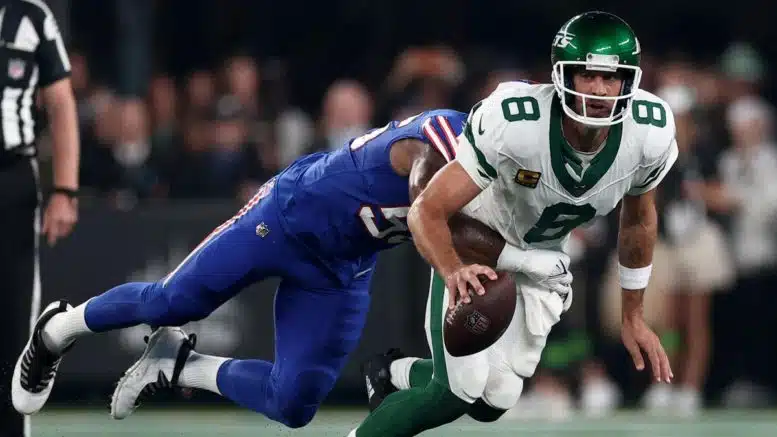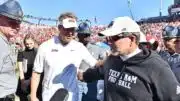It’s always interesting to see how leagues and players’ unions react to injuries. Zaza Pachulia stepped under Kawhi Leonard’s foot, and now NBA defenders can’t impede a shooter’s landing zone. Buster Posey getting blasted by Scott Cousins led to MLB banning plays at the plate. On Monday, Aaron Rodgers tore his Achilles on the notoriously sketchy MetLife turf, and as a result, the NFLPA wants all grass fields.
“Moving all stadium fields to high-quality natural grass surfaces is the easiest decision the NFL can make,” said NFLPA executive director Lloyd Howell. “The players overwhelmingly prefer it and the data is clear that grass is simply safer than artificial turf. It is an issue that has been near the top of the players’ list during my team visits and one I have raised with the NFL.”
Jets coach Robert Saleh said he thought the QB’s injury was “forcible,” and didn’t blame the playing surface, but did go on to acknowledge that the players prefer grass, and “there’s a lot invested in those young men.”
While it’s a nice sentiment and worthy cause — some soccer players, including Lionel Messi, flat-out refuse to play on artificial turf — the issue with changing to “high-quality natural grass surfaces” is cost and upkeep. The Chicago Bears play on grass, yet it’s not the highest quality because maintenance doesn’t match the foot traffic on Soldier Field due to public events.
In certain instances, the field needs completely new sod, which is expensive, and also has to be installed properly. And even then it can go wrong. The grass at the most recent Super Bowl, held at State Farm Stadium in Glendale, Ariz., was heavily criticized by both teams and, according to a former NFL groundskeeper, it had a “rotten smell” and began to decay before the game.
Obviously, there are a ton of logistics that go into a Super Bowl field — the halftime show prep and rehearsals most notably — but this is the biggest sports showcase in America, and it was still botched.
I have little faith that these owners, some of whom are very cheap, will put the requisite resources toward the upkeep it takes to maintain a safe and pristine field. The Cincinnati Bengals are finally getting their own indoor practice facility after having to use the University of Cincinnati’s facility when temperatures drop, and you think Mike Brown is going to renovate Paycor Field?
In March, Bengals Executive Vice President Katie Blackburn defended the team’s slit-film turf despite research showing a higher risk of lower extremity injuries on that surface, and the NFLPA seeking to ban it altogether.
“I don’t have statistics, but I really don’t think our turf has been a huge problem. Or a problem at all, to be quite honest,” Blackburn told the Cincinnati Enquirer at the time.
There also are multiple franchises that play in domes, making it impossible to have grass without an overhaul and/or intricate system in place. So this ask by the NFLPA is a lot larger than it appears.
The assumption that the MetLife turf snapped Rodgers’ tendon isn’t entirely accurate. He’s 39 years old, football is a violent sport, and statistically this type of thing was inevitable. At the same time, the guy spent the past 17 years scrambling around the hollowed Frozen Tundra of Lambeau Field, which is perhaps the most scrutinized and well-manicured surface in the NFL, and after four downs on recycled garbage, his season is over.
I’m sure Aaron Rodgers is open to being a martyr, though I’m not positive this is what he had in mind. Regardless, if there is a positive to come out of this unfortunate injury, let it be a pivot to high-quality, natural grass fields.
Original source here
#Natural #grass #wouldnt #prevented #Aaron #Rodgers #injury





